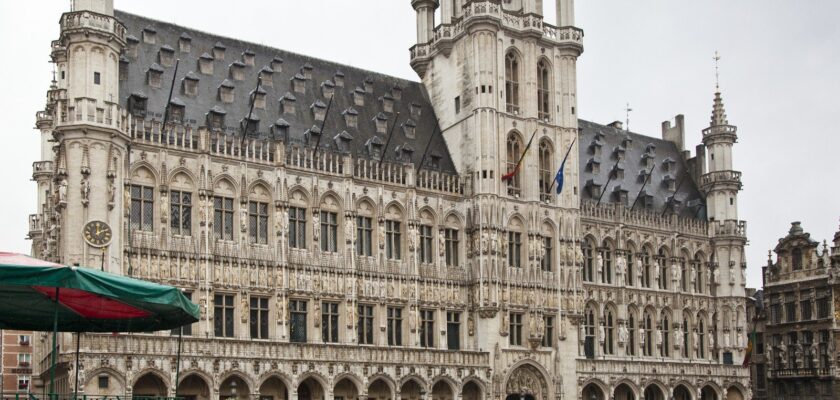Grand place
Grand Place is the central square of Brussels. The square began to take shape in the XII century, and by the XIV century, during the heyday of the cloth trade in Brussels, merchants from all over Europe began to gather here. Not only cloth was traded on the square, and the names of the nearby streets are still reminders of the specialization of sellers, for example, rue au Beurre – rue des Oils, rue des Bouchers – rue des Butchers and rue du Marche aux Poulets – rue du Chicken Market.
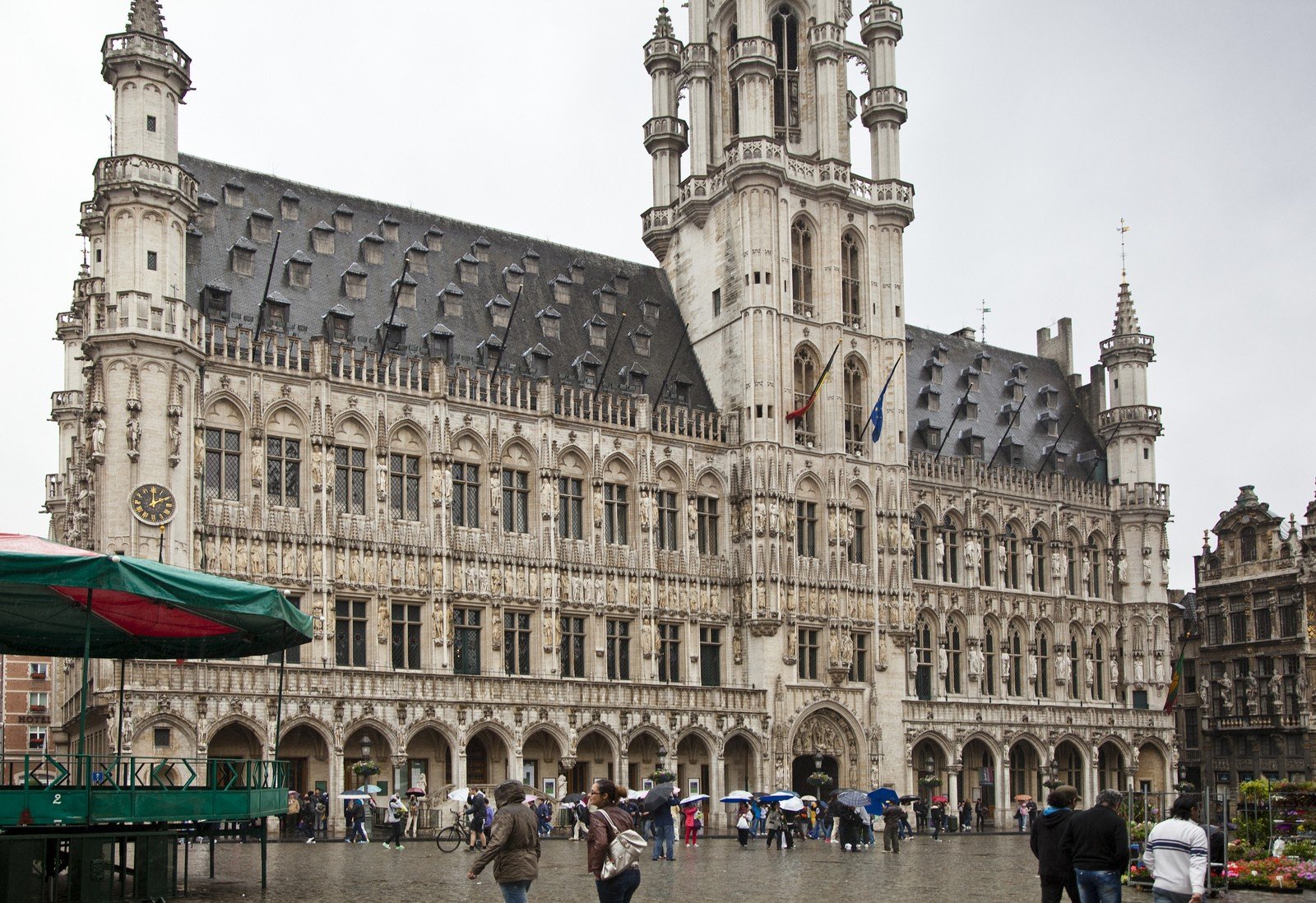
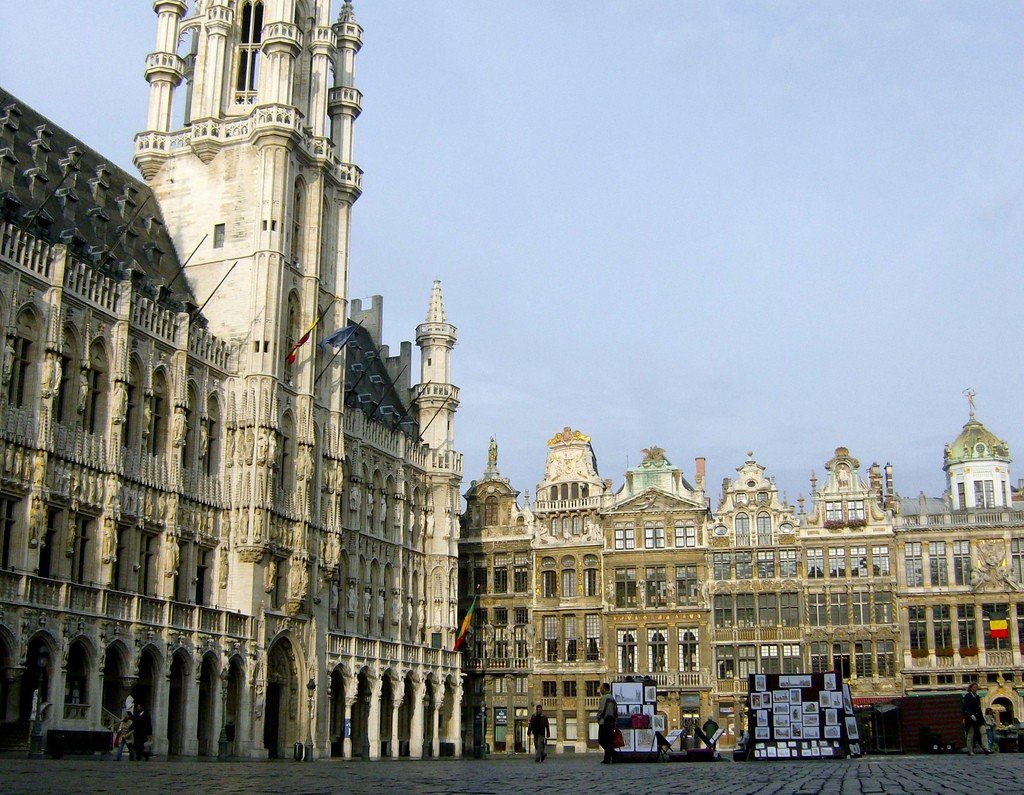
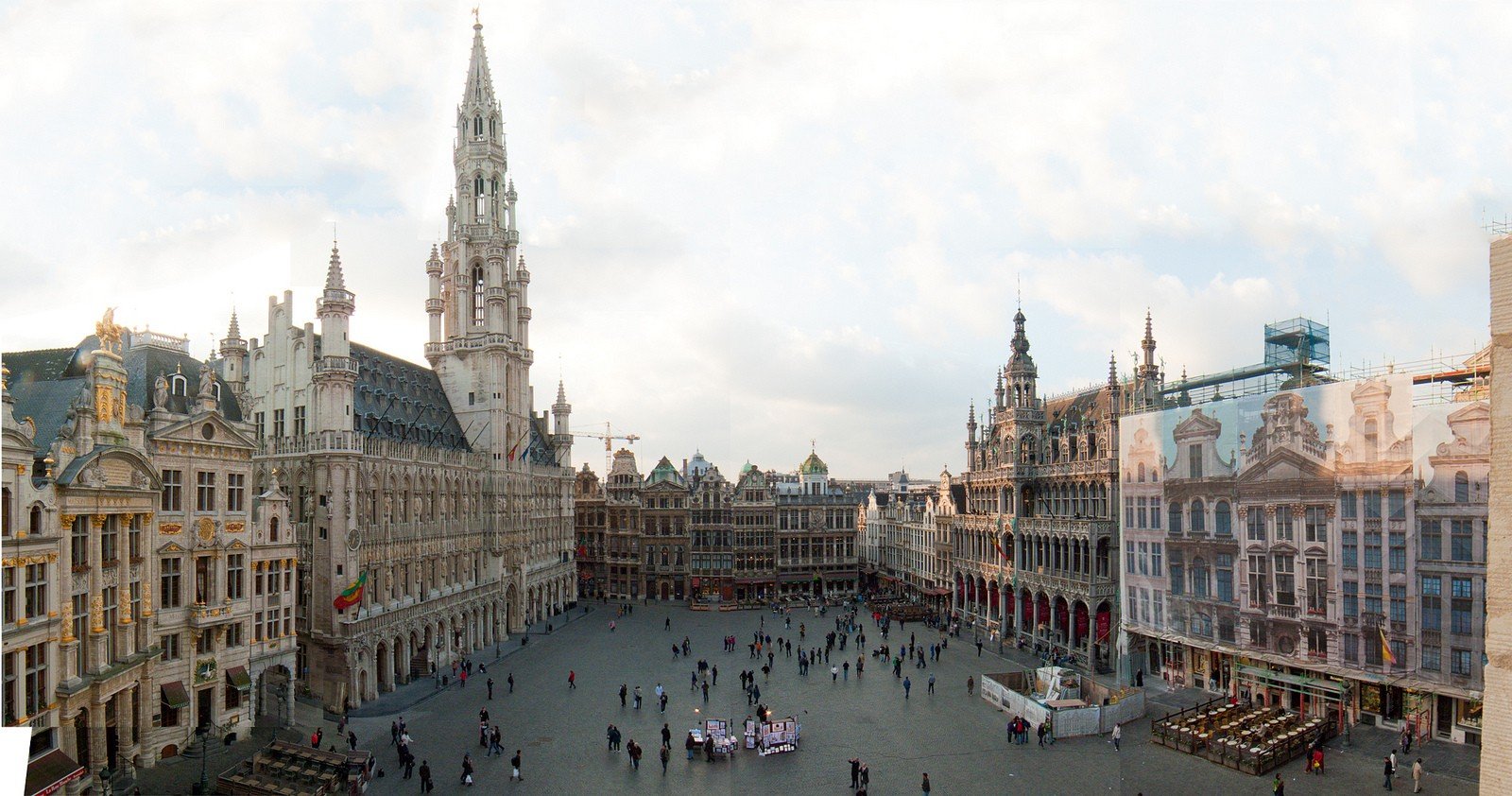
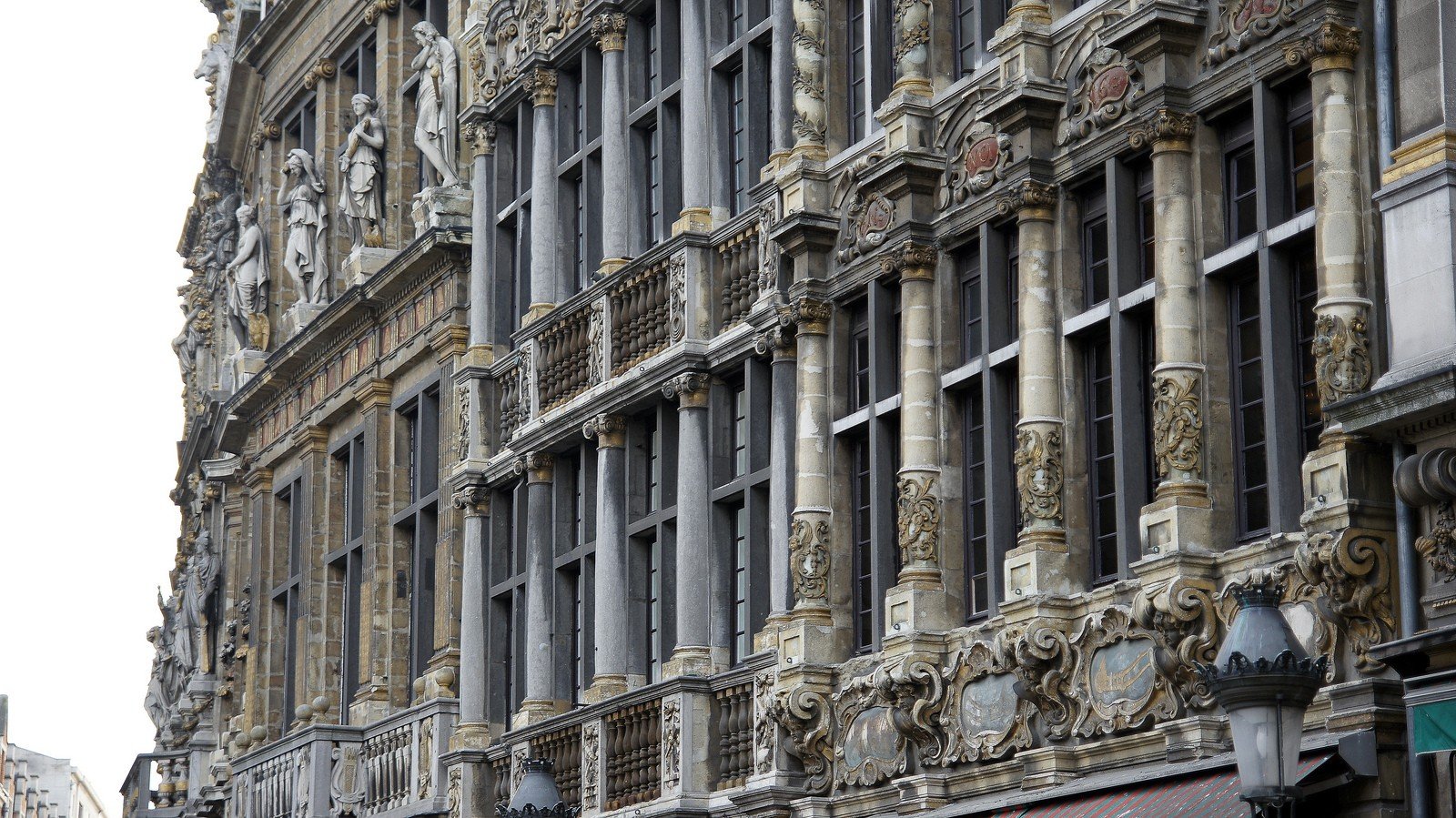
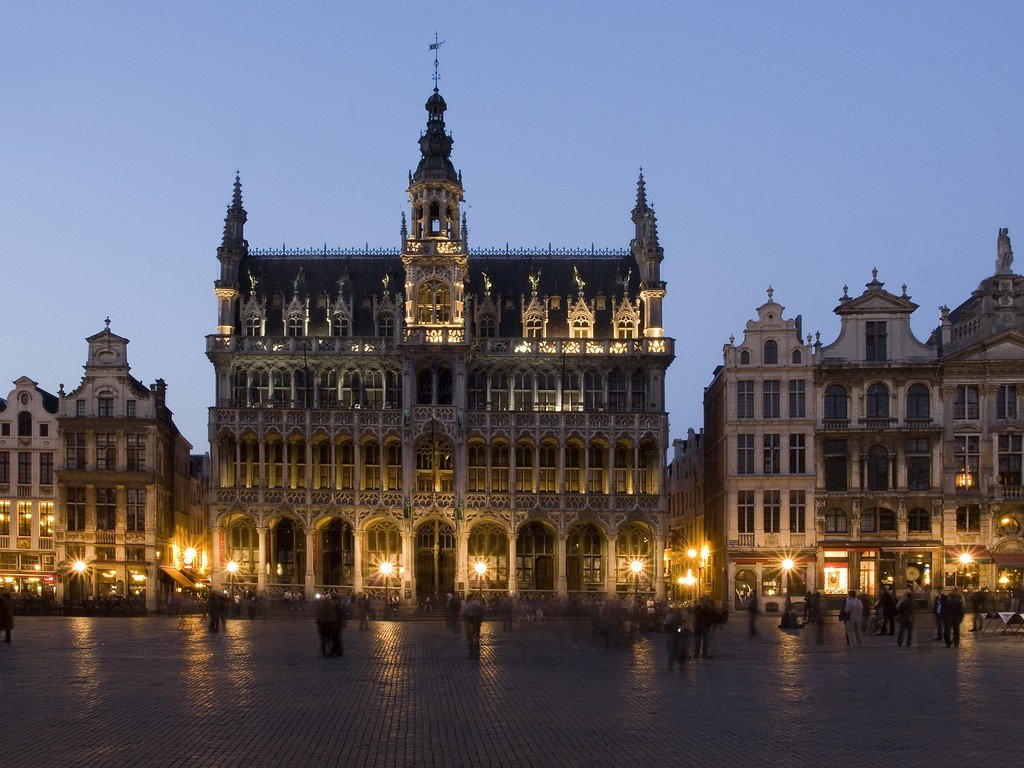
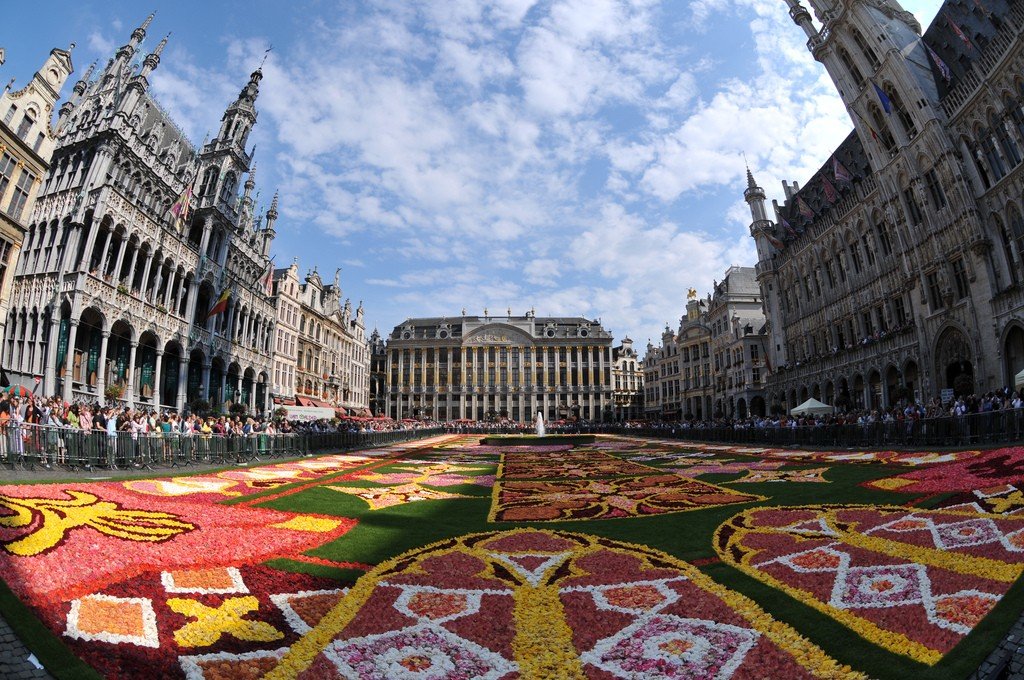
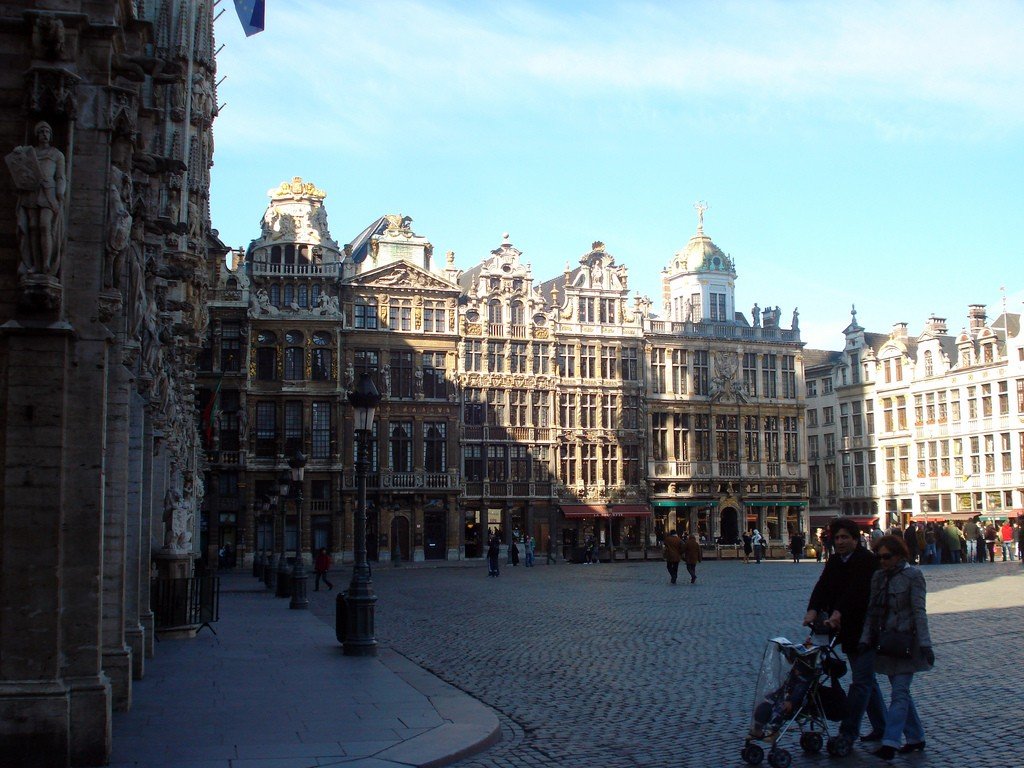
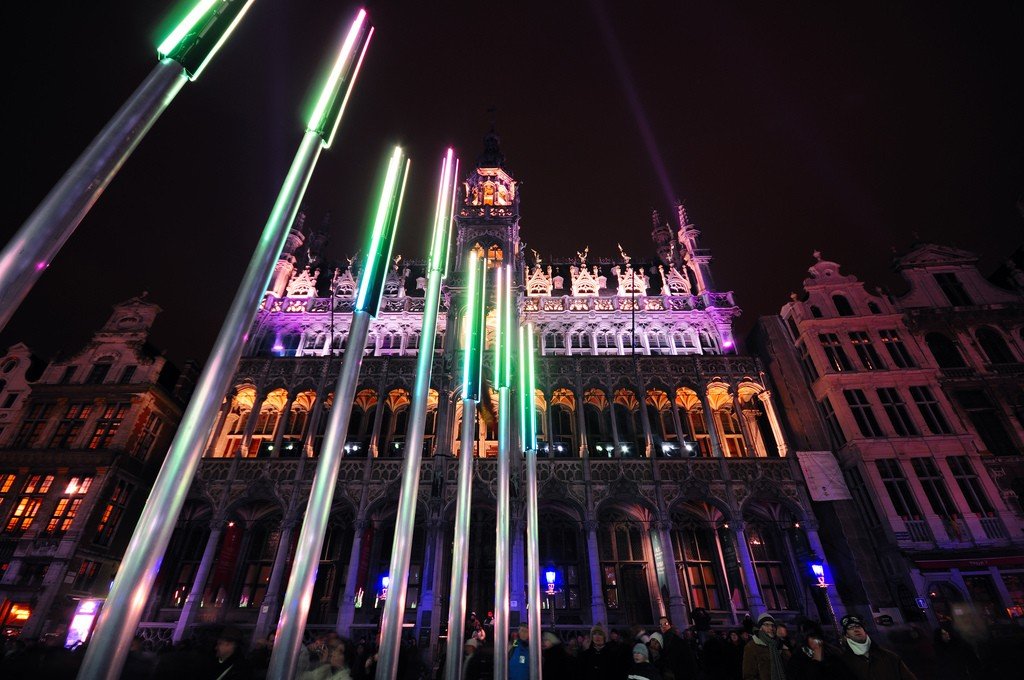
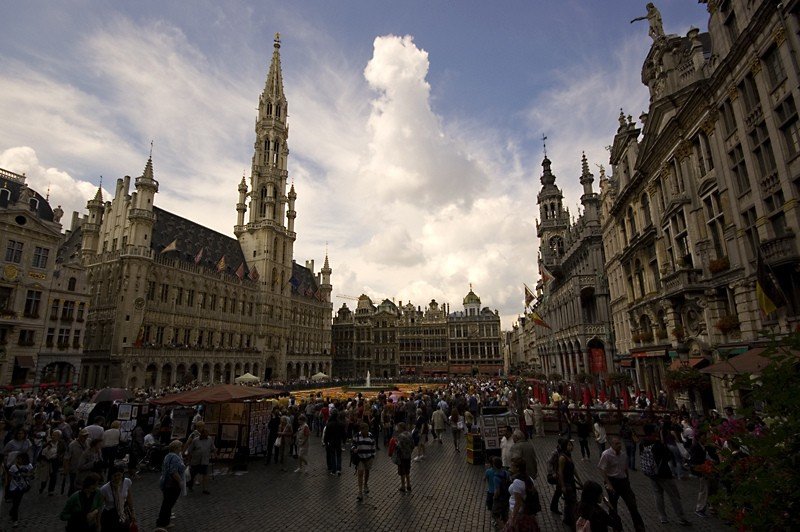
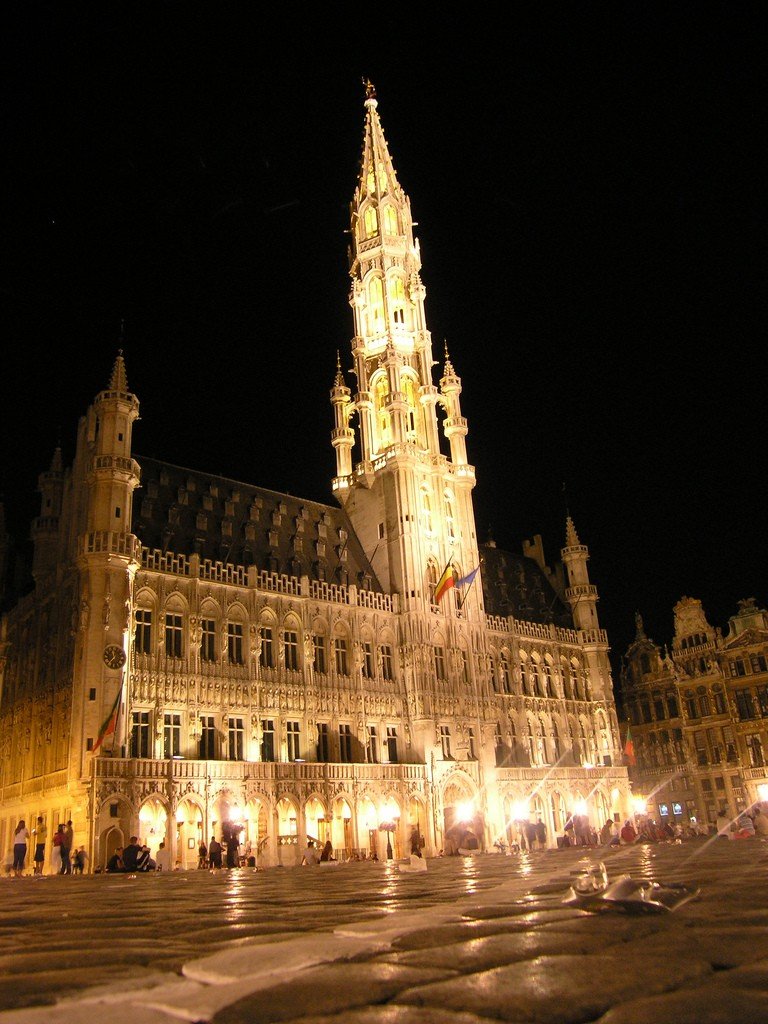
General information
The Gothic town hall (Hotel de Ville, XV century) can be rightly called the decoration of the architectural complex of the square. Strangely enough, it is the only old building to have survived on the square, although in 1695 it was the main target of French artillerymen. The Town Hall is crowned by a 97 m high tower built in the XV century by architect Jan van Ruysbroek. In 1997, after restoration, the gilded figure of St. Michael, the patron saint of the city, was re-installed on the tower. The building is asymmetrical: the west wing could not be completed as planned because Charles the Bold forbade the narrowing of the neighboring street, so the wing is somewhat shorter than the east wing. The first floor is decorated with a portico with 17 arches. The high window openings of the upper floors are decorated with sculpture. The Gothic meeting hall (25 x 12 m, XVI century) has an oak floor with black wood inserts, and the ceiling and walls are decorated with gilded stucco and tapestries (1875-1881). There are regular guided tours of the town hall €5 adults, €3 students and pensions, children under 6 are free.
.Since the Grand Place was the seat of the city government, all the craft shops and trade guilds built their offices on it – Guildhalls. Each house had its own name and symbol, which have been preserved to this day. For example, the Maison des Boulangers is decorated with six allegorical figures representing Strength, Bread, Wind, Fire, Water and Caution. The House of the Wheelbarrow (La Brouette) belonged at first to a shop of grease merchants, later to a shop of tallow candle merchants, and in 1912 a statue of St. Aegidius (Joseph van Hamme) was erected in its niche. The House of the Sack (Le Sac) was the pride of the boasters and cabinetmakers, and the House of the Wolf (La Louve), which belonged to the archers’ guild, is decorated with a gilded phoenix, a symbol of the restoration of the Grand-Place after the French bombardment. Le Cornet (Le Cornet) was occupied by the shipbuilders’ shop and its architectural decoration resembles the stern of a ship. Le Renard, the headquarters of the haberdashery, is decorated with a figure of St. Nicholas. In ancient times from the balcony of the house Star (L’Etoile) the prosecutor of Brussels monitored the execution of sentences. This is also where the national hero Everard’t Serclaes ended his life. This patriot, who prevented the Flemish from capturing Brussels in 1356, died in 1388, again defending his native city. Under the colonnade of the building, a cenotaph (memorial tombstone), popularly called “The Sleeping Knight”, is erected in his memory. There is a belief that great fortune awaits the one who touches the bronze hand of the knight. The House of the Swan (Le Sygne) is decorated with an image of a swan. The house was originally a butchers’ shop, then a restaurant was opened here, where Marx and Engels liked to visit. Le Pigeon belonged to the Guild of City Artists, and in 1852 it was the home of Victor Hugo, who was exiled from France.
.
In 1695, after a 36-hour bombardment by French artillery, most of the guild houses were destroyed. They were rebuilt in the early 18th century. In 1998, the Grand Place was inscribed by UNESCO as a World Heritage Site. For three days in August, a carpet of begonia flowers (110 by 68 m) is laid out on the square, and an ice rink is poured in winter.
. Opposite the town hall was the Maison du Roi (King’s House), which now houses the Brussels City Museum (Musee de la Ville de Bruxelles; tel. 02 279 43 50, Tues-Wed, Fri-Fri 10.00-17.00, Thu till 20.00, Fri closed €4 adults, €3 pence, and students, children under 6 free). The exhibitions on three floors present the history of the city. On the first floor is Pieter Bruegel the Elder’s painting The Wedding Procession (Cortege de Noces, 1567). One of the rooms on the third floor is dedicated to gifts to the symbol of Brussels – the Pissing Boy (Manneken-pis). More than eight hundred outfits are kept here, ranging from national costumes, including Ukrainian Cossack costumes, to Santa Claus and Elvis costumes..Next to the square is also the Musee du Cacao et du Chocolat (Cocoa and Chocolate Museum), which presents the history of chocolate production, methods of making Belgian pralines, a collection of labels of famous chocolate brands (Rue de la Tete d’Or, 9-11, m. Bourse, tel. 02 514 20 48 Tues-Fri 10.00-16.30, Mon-Fri closed).
.